 Author: Stphanie Angoh Cover: Stphanie Angoh ISBN 978-1-78160-605-6 Confidential Concepts, worldwide, USA Parkstone Press International, New York, USA All rights reserved. No part of this may be reproduced or adapted without the permission of the copyright holder, throughout the world. Unless otherwise specified, copyright on the works reproduced lies with the respective photographers. Despite intensive research, it has not always been possible to establish copyright ownership. Where this is the case, we would appreciate notification. Stphanie Angoh Turner
Author: Stphanie Angoh Cover: Stphanie Angoh ISBN 978-1-78160-605-6 Confidential Concepts, worldwide, USA Parkstone Press International, New York, USA All rights reserved. No part of this may be reproduced or adapted without the permission of the copyright holder, throughout the world. Unless otherwise specified, copyright on the works reproduced lies with the respective photographers. Despite intensive research, it has not always been possible to establish copyright ownership. Where this is the case, we would appreciate notification. Stphanie Angoh Turner
Eric Shanes 

St.
Anselm's Chapel, with part of Thomas--Becket's crown,
Canterbury Cathedral , R.A. 1794.
Watercolour, 51.7 x 37.4 cm. Whitworth Art Gallery, Manchester, U.K.
J.M.W.Turner: a Landscape and Marine Painter without Equal? From darkness to light: perhaps no painter in the history of western art evolved over a greater visual span than Turner. If we compare one of his earliest exhibited masterworks, such as the fairly low-keyed
St. Anselm's Chapel, with part of Thomas--Becket's crown, Canterbury Cathedral of 1794, with a brilliantly-keyed picture dating from the 1840s, such as The Falls of the Clyde , it seems hard to credit that the two images stemmed from the same hand, so vastly do they differ in appearance.
Yet this apparent disjunction can easily obscure the profound continuity that underpins Turner's art, just as the dazzling colour, high tonality and loose forms of the late images can lead to the belief that the painter shared the aims of the French Impressionists or even that he wanted to be some kind of abstractionist, both of which are completely untrue notions. Instead, this continuity demonstrates how single-mindedly Turner pursued his early idealising goals and how magnificently he finally attained them. Joseph Mallord William Turner was born in London on 23 April 1775, the son of a barber. In 1789 he began studying at the only art school in Britain, the Royal Academy Schools. He supplemented the plaster modelling and life drawing he was exclusively taught there by apprenticing with journeyman topographer and architectural watercolourist, Thomas Malton Jr. (1748-1804).
From 1791 to 1792, he also worked briefly as a scenic painter at the Pantheon Opera House. In 1791 he embarked upon the first of his annual tours to gain topographical material for his images; over the rest of his career he would undertake some fifty-six additional journeys throughout Britain and the Continent. In 1793, the Royal Society of Arts awarded the seventeen-year-old its Greater Silver Pallet award for landscape drawing. To survive financially, Turner needed to sell from the outset. Accordingly, a few months after entering the R.A. Schools he launched himself with a finished watercolour, The Archbishop's Palace, Lambeth (p.8) , in the 1790 Royal Academy Exhibition.
Up to 1795 he displayed only finished watercolours in the annual shows, but in 1796 he displayed his first oil painting at the Royal Academy. This was the Fishermen at Sea of 1796 (p. 12), and it demonstrates how fully the painter already understood wave-formation, reflectivity and the underlying motion of the sea. From this time onwards, his depictions of the sea would become ever more masterly, soon achieving a mimetic and expressive power that is unrivalled in the history of marine painting. After 1796 Turner annually displayed oils at the Royal Academy, and only in 1805, 1821, 1824, 1848 and 1851 would he fail to do so. 1798. Oil on canvas, 74.5 x 58.5 cm. 1798. Oil on canvas, 74.5 x 58.5 cm.
Turner Bequest, Tate Britain, London. 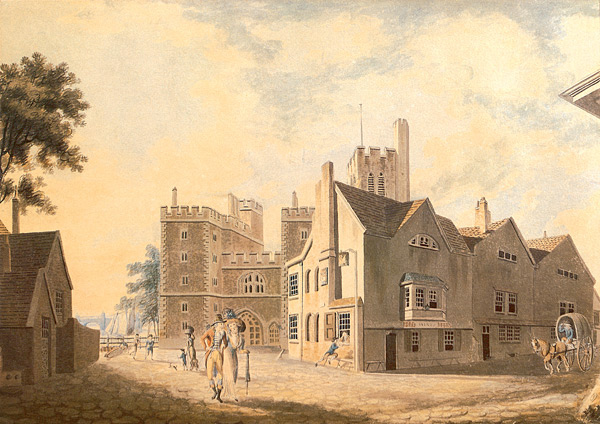
. The Archbishop's Palace , Lambeth , R.A. 1790.
A4, watercolour, 26.3 x 37.8 cm. Indianapolis Museum of Art, Indianapolis, Indiana, U.S.A.
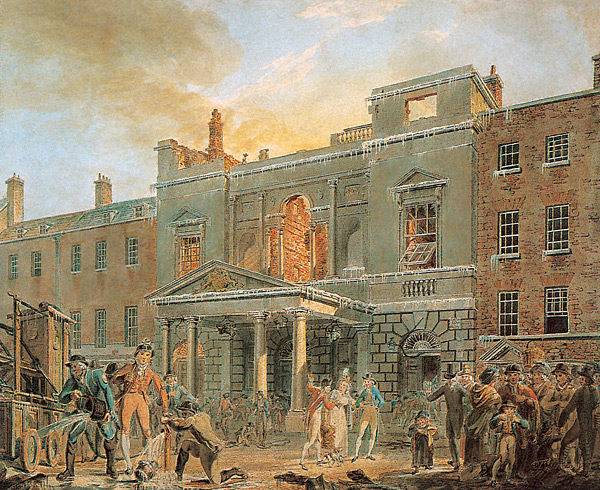
.
The Pantheon, the Morning after the Fire , R.A. 1792. Watercolour, 39.5 x 51.5 cm. Turner Bequest, Tate Britain, London.  . 1797. 1797.
. 1797. 1797.
Watercolour, 40 x 55.9 cm. National Museum of Wales, Cardiff. 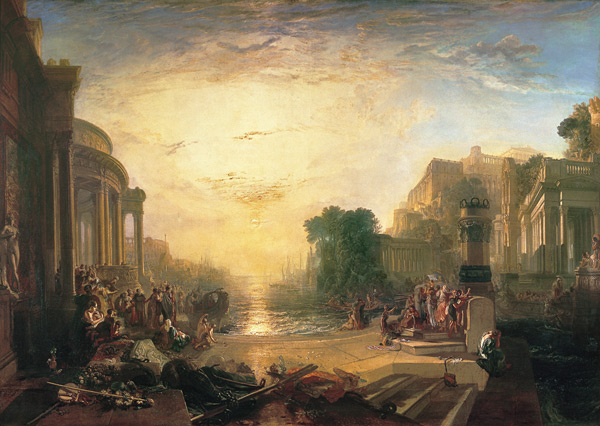 . The Decline of the Carthaginian Empire , R.A. 1817. Oil on canvas, 170 x 238.5 cm.
. The Decline of the Carthaginian Empire , R.A. 1817. Oil on canvas, 170 x 238.5 cm.
Turner Bequest, Tate Britain, London. 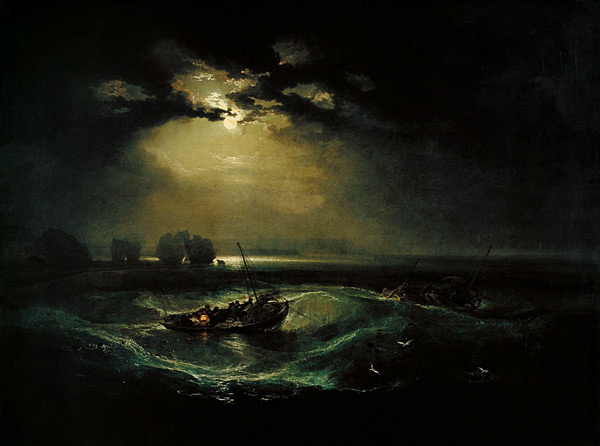 Fishermen at Sea , R.A. 1796. Oil on canvas, 91.5 x 122.4 cm. Turner Bequest, Tate Britain, London. 1800. 1800.
Fishermen at Sea , R.A. 1796. Oil on canvas, 91.5 x 122.4 cm. Turner Bequest, Tate Britain, London. 1800. 1800.
Oil on canvas, 119.5 x 90.2 cm. Royal Academy of Arts, London. Towards the end of 1799, Turner's outstanding talents received official recognition with his election as an Associate Royal Academician. In 1801, he created a sensation at the Academy with a marine subject in oil, the so-called Bridgewater Seapiece whose full title is Dutch Boats in a Gale: Fishermen endeavouring to put their Fish on Board . Largely as a result of that impact, he was elected a full Royal Academician in 1802, at the age of just twenty-six. He was the youngest Academician to have been elected to date.
Turner's new status guaranteed him an audience, for Academicians enjoyed the automatic right to display up to eight works in the annual Exhibition. Later in 1802, Turner took advantage of the brief peace between Britain and France to visit Switzerland. For years afterwards he drew from the sketchbook material gathered there. In 1806, Turner embarked upon a major mezzotint engraving project, the Liber Studiorum. Eventually he made one hundred sepia watercolours for this project, of which seventy-one were reproduced by means of engraving. The following year Turner was elected the Royal Academy Professor of Perspective.
Over the next three years he embarked upon a rigorous reading, or re-reading, of the theoretical literature of art. 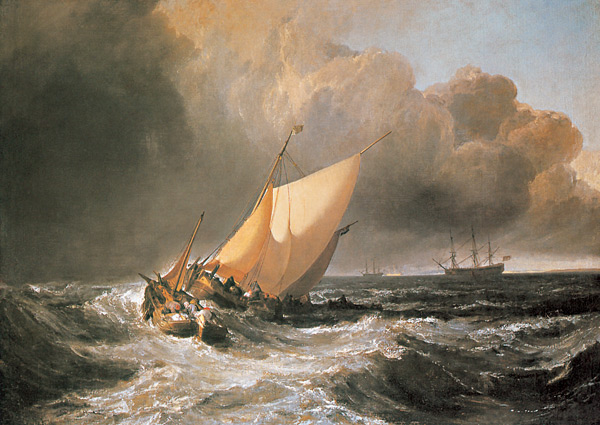 . Dutch Boats in a Gale: Fishermen endeavouring
. Dutch Boats in a Gale: Fishermen endeavouring
to put their Fish on Board also called
"The Bridgewater Seapiece," R.A. 1801. Oil on canvas, 162.5 x 222 cm. 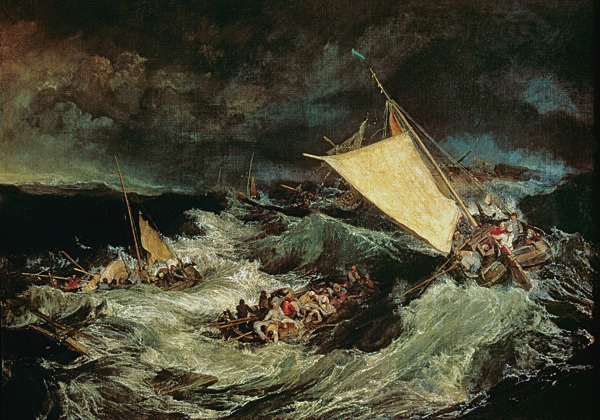 .
.  .
.
The Shipwreck , Turner's Gallery, 1805 . Oil on canvas, 170.5 x 241.5 cm. Turner Bequest, Tate Britain, London. 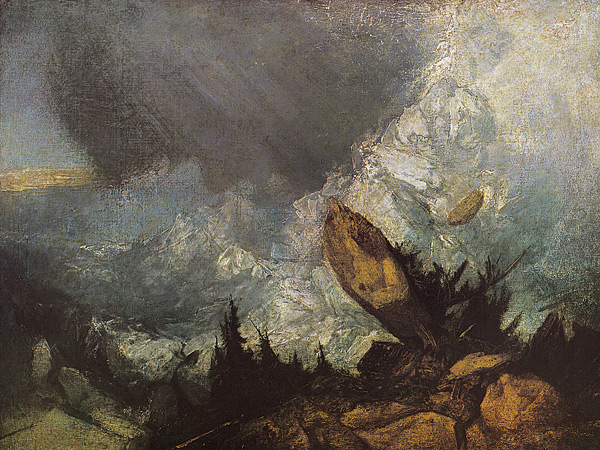 . The Fall of an Avalanche in the Grisons , 1810. Oil on canvas, 90 x 120 cm.
. The Fall of an Avalanche in the Grisons , 1810. Oil on canvas, 90 x 120 cm.
Next page

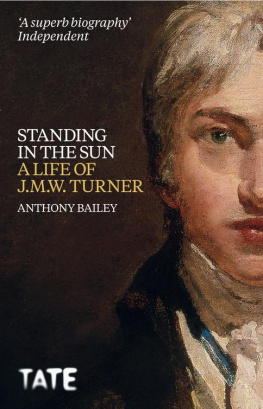
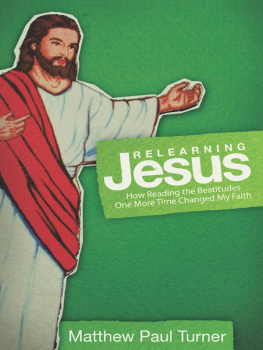
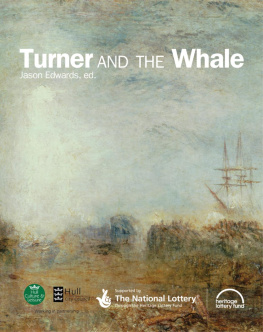


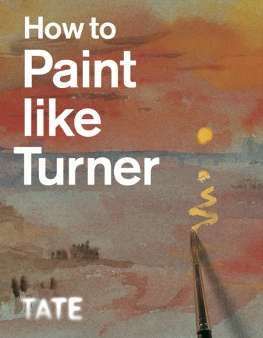
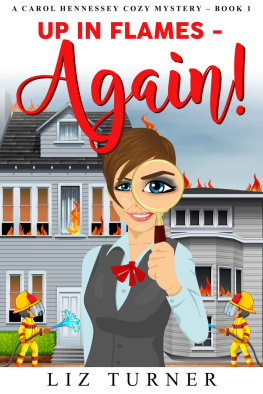
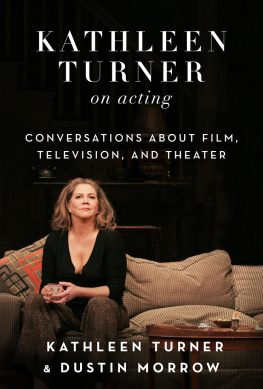



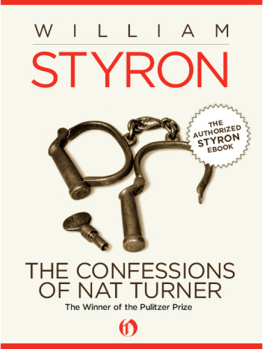
 Author: Stphanie Angoh Cover: Stphanie Angoh ISBN 978-1-78160-605-6 Confidential Concepts, worldwide, USA Parkstone Press International, New York, USA All rights reserved. No part of this may be reproduced or adapted without the permission of the copyright holder, throughout the world. Unless otherwise specified, copyright on the works reproduced lies with the respective photographers. Despite intensive research, it has not always been possible to establish copyright ownership. Where this is the case, we would appreciate notification. Stphanie Angoh Turner
Author: Stphanie Angoh Cover: Stphanie Angoh ISBN 978-1-78160-605-6 Confidential Concepts, worldwide, USA Parkstone Press International, New York, USA All rights reserved. No part of this may be reproduced or adapted without the permission of the copyright holder, throughout the world. Unless otherwise specified, copyright on the works reproduced lies with the respective photographers. Despite intensive research, it has not always been possible to establish copyright ownership. Where this is the case, we would appreciate notification. Stphanie Angoh Turner


 .
.  . 1797. 1797.
. 1797. 1797. . The Decline of the Carthaginian Empire , R.A. 1817. Oil on canvas, 170 x 238.5 cm.
. The Decline of the Carthaginian Empire , R.A. 1817. Oil on canvas, 170 x 238.5 cm. Fishermen at Sea , R.A. 1796. Oil on canvas, 91.5 x 122.4 cm. Turner Bequest, Tate Britain, London. 1800. 1800.
Fishermen at Sea , R.A. 1796. Oil on canvas, 91.5 x 122.4 cm. Turner Bequest, Tate Britain, London. 1800. 1800. . Dutch Boats in a Gale: Fishermen endeavouring
. Dutch Boats in a Gale: Fishermen endeavouring .
.  . The Fall of an Avalanche in the Grisons , 1810. Oil on canvas, 90 x 120 cm.
. The Fall of an Avalanche in the Grisons , 1810. Oil on canvas, 90 x 120 cm.